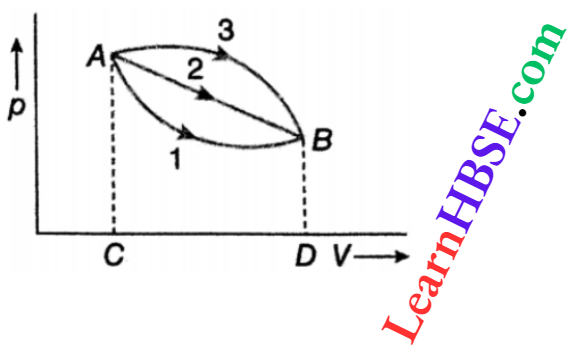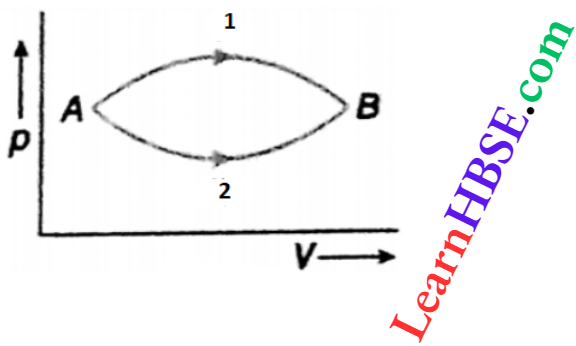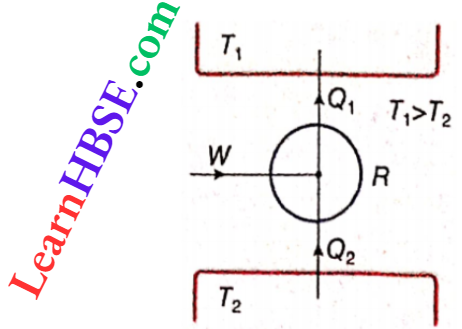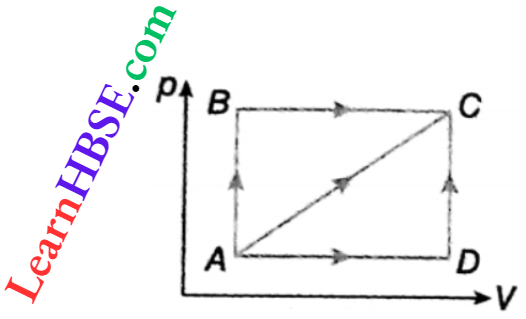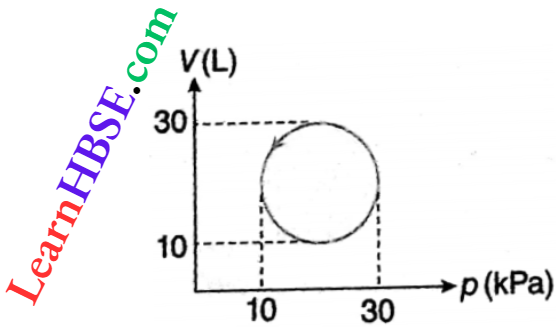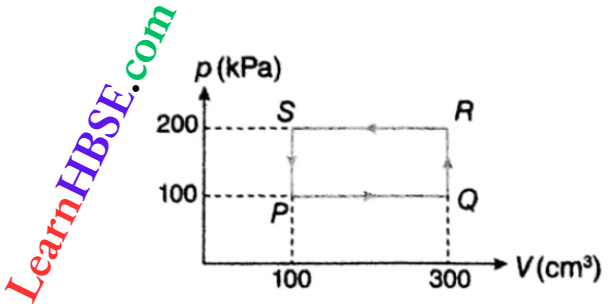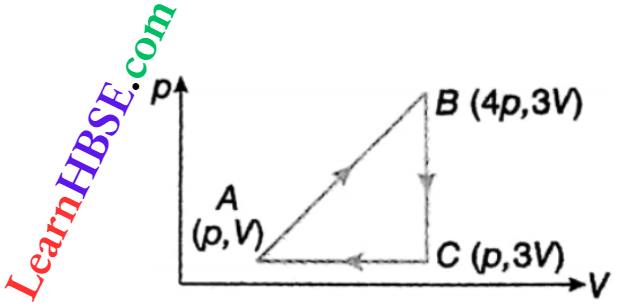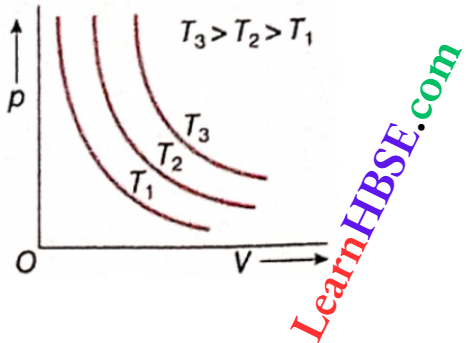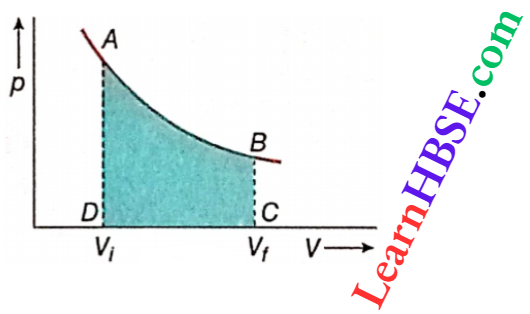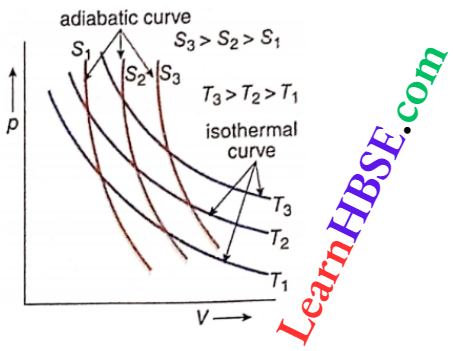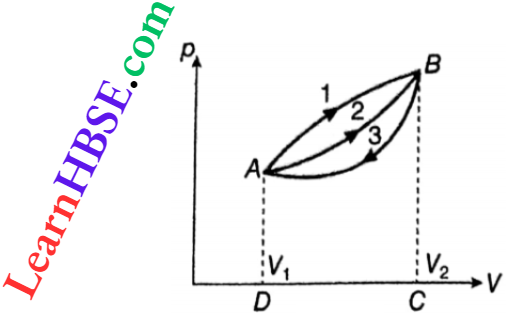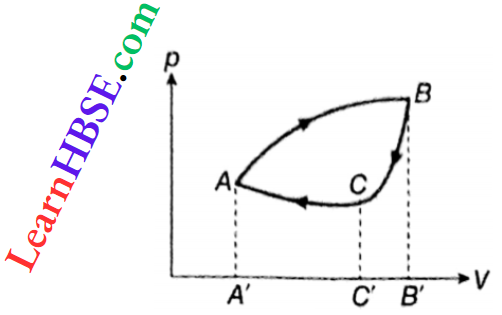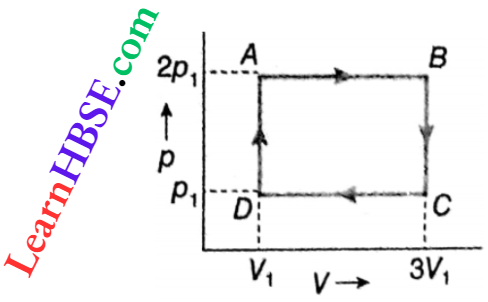Calorimetry Determination Of High Temperature
A mercury thermometer cannot be used direcdy for the measurement of temperature of a furnace or a flame. But the fundamental principle of calorimetry may be adopted to measure such high temperatures accurately and easily.
- A small piece of solid whose specific heat is known and which has a sufficiendy high melting point (example, iron whose melting point is 1811 K) is to be placed in the source for a considerable period of time and allowed to attain thermal equilibrium with the source.
- It is then quickly transferred to the water in a calorimeter. Initial temperature of the water is to be noted before the addition of the solid. The water is stirred well and the final temperature attained is measured by a thermometer.
- There should be sufficient water in the calorimeter so that the final temperature attained remains below the upper fixed point of the thermometer used.
Calculation: Let the temperature of the source = t2 = initial temperature of the solid, mass of the solid taken = M, specific heat of the solid = s, water equivalent of the calorimeter with stirrer = W, mass of the water in the calorimeter = m, its specific heat = sw, initial temperature of the calorimeter and the water = t1, the final temperature of the water and the solid = t.
∴ Heat lost by the solid = Ms(t2 – t)
Heat gained by the calorimeter and its stirrer = Wsw(t- t1)
Heat gained by the water = m x sw x (t -t1)
Hence, from the fundamental principle of calorimetry, \(M s\left(t_2-t\right)=W s_{w^{(}}\left(t-t_1\right)+m s_w\left(t-t_1\right)\)
or, \(\left(t_2-t\right)=\frac{(W+m) s_w\left(t-t_1\right)}{M s}\)
or, \(t_2=\frac{(W+m) s_{w^{\prime}}\left(t-t_1\right)}{M s}+t\)….(1)
As magnitudes of all the quantities in the right hand side of equation (1) are known, t2 can be calculated.
Calorimetry Determination Of High-Temperature Numerical Examples
Example 1. 50 g of an alloy containing 80% copper and 20% silver is heated up to t1 = 80°C and then dropped in a calorimeter of water equivalent W = 10 g containing m = 90 g of water at t2 = 20°C. What will be the final temperature of the mixture? The specific heat capacity of copper and silver are sc = cal · g-1 · °C-1 and ss = 0.15 cal · g-1 · °C-1 respectively.
Solution:
Given
50 g of an alloy containing 80% copper and 20% silver is heated up to t1 = 80°C and then dropped in a calorimeter of water equivalent W = 10 g containing m = 90 g of water at t2 = 20°C.
Mass of copper in the alloy, \(m_c=\frac{50 \times 80}{100}=40 \mathrm{~g}\)
∴ Mass of silver, ms = 50 – 40 = 10 g
Let the final temperature of the mixture be t.
Applying the formula, H = mst
Heat lost by copper = 40 x 0.09 x (80 – t) = (288 – 3.6t) cal
Heat lost by silver = 10 x 0.05 x (80 – t) = (40 – 0.5t) cal
Total heat lost by copper and silver = (328 – 4.1t) cal
Heat gained by water and the calorimeter
= (10 + 90) x 1 x (t — 20) = (100 t-2000) cal
∴ Heat lost = heat gained
∴ 328-4.1t = 100t-2000
or 104.1t = 2328
or, t = \(\frac{2328}{104.1}=22.36^{\circ} \mathrm{C}\)
∴ Final temperature of the mixture is 22.36°C
Example 2. A piece of platinum of mass 200 g, is heated for a sufficiently long time in a furnace and dropped quickly in 650 g of water at 10°C, kept in a container of water equivalent 50g. Final temperature of the mixture becomes 25°C. If the specific heat capacity of platinum is 0.03 cal · g-1 · °C-1, find the temperature of the furnace.
Solution:
Given
A piece of platinum of mass 200 g, is heated for a sufficiently long time in a furnace and dropped quickly in 650 g of water at 10°C, kept in a container of water equivalent 50g.
Let the temperature of the furnace be t °C which is also the initial temperature of the piece of platinum.
Heat lost by the platinum piece = 200 x 0.03 x (t-25) = 6(t-25) cal
Heat gained by the container and water
= 50 x (25 – 10) + 650 x 1 x (25 – 10)
= 750 + 9750 = 10500 cal
Assuming no loss of heat to the surroundings, heat lost = heat gained
or, 6(t-25) = 10500 or, t = 1775°C
∴ The temperature of the furnace is 1775°C.
Example 3. A solid of mass 70 g is heated and dropped in a cal-orimeter of water equivalent 10 g containing 116g of water. If the fall in temperature of the solid is 15 times the rise in temperature of water, find the specific heat capacity of the solid.
Solution:
Given
A solid of mass 70 g is heated and dropped in a cal-orimeter of water equivalent 10 g containing 116g of water. If the fall in temperature of the solid is 15 times the rise in temperature of water,
Let t be the rise in temperature of water and s the specific heat of the solid.
Fall in temperature of the solid = 15 t
Heat lost by the solid =70 x s x 15t
Heat gained by the calorimeter and water
= 10 x t + 116 x 1 x t = 126t
Since, heat lost = heat gained 70 x s x 15t = 126t
or, \(s=\frac{126}{70 \times 15}=0.12 \mathrm{cal} \cdot \mathrm{g}^{-1} \cdot{ }^{\circ} \mathrm{C}^{-1}\)
Example 4. Ratio between the densities and specific heats of the materials of two bodies are 2 : 3 and 0.12: 0.09 respectively. If their volumes are in the ratio 7:8, what is the ratio of their thermal capacities?
Solution:
Given
Ratio between the densities and specific heats of the materials of two bodies are 2 : 3 and 0.12: 0.09 respectively. If their volumes are in the ratio 7:8,
Let the density of the first substance be d1, its specific heat s1, and volume V1.
Also, let the density, specific heat, and volume for the second body be d2, s2, and V2 respectively.
Hence, thermal capacity of the first one, C1 = m1s1 = V1d1s1
and that of the second body, C2 = m2s2 = V2d2s2
∴ \(\frac{C_1}{C_2}=\frac{V_1}{V_2} \times \frac{d_1}{d_2} \times \frac{s_1}{s_2}=\frac{7}{8} \times \frac{2}{3} \times \frac{0.12}{0.09}=\frac{7}{9}\)
Hence, their thermal capacities are in the ratio of 7: 9.
Example 5. A body of mass 100 g is heated up to 122°G and dropped quickly in water of mass 300 g kept at 28°C in a copper calorimeter of mass 50 g. The final temperature of the mixture becomes 30°C. If the specific heat of copper is 0.09 cal · g-1 · °C-1, find the specific heat of the material of the body.
Solution:
Given
A body of mass 100 g is heated up to 122°G and dropped quickly in water of mass 300 g kept at 28°C in a copper calorimeter of mass 50 g. The final temperature of the mixture becomes 30°C. If the specific heat of copper is 0.09 cal · g-1 · °C-1,
Let the specific heat of the material be s.
Heat lost by the body = 100 x s x (122 – 30)
= 100 x s x 92 = 9200s cal
Heat gained by water = 300 x 1 x (30 – 28)
= 300 x 2 = 600 cal
Heat gained by the calorimeter
= 50 x 0.09 x (30-28) = 4.5×2 = 9 cal
We know, heat lost = heat gained
or, 9200 s = 600 + 9
or, \(s=\frac{609}{9200}=0.0662 \mathrm{cal} \cdot \mathrm{g}^{-1} \cdot{ }^{\circ} \mathrm{C}^{-1}\)
Example 6. Calculate the increase in energy (in joule) per atom of a piece of aluminum when its temperature is raised by 1°C. Given, 27 g of aluminium contains 6 x 1023 atoms, and specific heat capacity of aluminium = 0.2 cal · g-1 · C-1.
Solution:
Solution:
Given
27 g of aluminium contains 6 x 1023 atoms, and specific heat capacity of aluminium = 0.2 cal · g-1 · C-1.
Heat required to raise the temperature of 1 g aluminium through 1°C = 1 x 0.2 x 1 = 0.2 cal = 0.2 x 4.2 J = 0.84 J.
Number of atoms in 1 g of aluminium = \(\frac{6 \times 10^{23}}{27}\)
Hence, increase in energy per atom = \(\frac{0.84}{\frac{6 \times-10^{23}}{27}} \mathrm{~J}\) = 3.78 x 10-23 J
Example 7. When 210 g of water at 80°C is kept in a calorimeter of water equivalent 90 g, its temperature decreases to 60°C in 10min. If the water is replaced by a liquid of mass 100 g, the same fall in temperature takes place in 5 min. If the rate of cooling is the same in both cases, what is the specific heat capacity of the liquid?
Solution:
Given
When 210 g of water at 80°C is kept in a calorimeter of water equivalent 90 g, its temperature decreases to 60°C in 10min. If the water is replaced by a liquid of mass 100 g, the same fall in temperature takes place in 5 min. If the rate of cooling is the same in both cases
Heat lost by the calorimeter and water in 10 min = 90 x (80- 60) + 210 x 1 x (80-60) =6000 cal
∴ Rate of cooling = \(\frac{6000 \mathrm{cal}}{10 \mathrm{~min}}\) = 600 cal · min-1
Let the specific heat of the liquid be s.
Heat lost by the calorimeter and liquid in 5 min
= 90 x (80-60) +100 x s x (80-60)
= (1800 + 2000s) cal
Hence, rate of cooling = \(\frac{(1800+2000 \mathrm{~s})}{5} \mathrm{cal} \cdot \mathrm{min}^{-1}\)
As per given condition, \(\frac{(1800+2000 s)}{5}=600\)
or, 1800 + 20005 = 3000
or, s = 0.6 cal · g-1· °C-1
Example 8. Liquids A, B, and C are at temperatures 15°C, 25°C, and 35°C respectively. When equal masses of A and B are mixed, the temperature becomes 21°C. The temperature of the mixture of equal masses of B and C becomes 32°C.
- Show that the ratio of the specific heats of A and C is 2:7.
- What will be the final temperature of the mixture of equal masses of A and C?
Solution: Let the specific heats of A, B, and C be sA, sB, and sC respectively.
1. When liquid A of mass m and liquid B of mass m are mixed, heat lost by B = heat gained by A
i.e., mx sB x (25-21) = m x sA x(21 -15)
or, sA· 6 = sB · 4
or, \(\frac{s_A}{s_B}=\frac{2}{3}\)…(1)
When liquid B of mass m and liquid C of mass m are mixed, the heat lost by C = heat gained by B.
i.e., \(m \times s_C \times(35-32)=m \times s_B \times(32-25)\)
or, \(s_C \cdot 3=s_B \cdot 7\)
or, \(\frac{s_B}{s_C}=\frac{3}{7}\)…(2)
From (1) and (2), we get
⇒ \(\frac{s_A}{s_B} \times \frac{s_B}{s_C}=\frac{2}{3} \times \frac{3}{7} \text { or, } \frac{s_A}{s_C}=\frac{2}{7}\)
∴ \(s_A: s_C=2: 7\)
2. Let the final temperature of the mixture of liquid A of mass m and liquid C of mass m be t° C.
So, heat gained by A = heat lost by C
∴ m x sA x (t-15) = m x sC x (35-t)
or, \(\frac{s_A}{s_C}=\frac{35-t}{t-15} \quad \text { or, } \frac{2}{7}=\frac{35-t}{t-15} \quad \text { or, } t=30.56^{\circ} \mathrm{C}\)
∴ Temperature of the mixture is 30.56°C.
Example 9. An iron ball of mass 10 g and of specific heat 0.1 cal · g-1 · °C-1 is heated in a furnace and quickly transferred to a thick-walled copper vessel of mass 200 g and of specific heat 0.09 cal · g-1 · °C-1, kept at 50°C. The vessel along with its contents, is placed in a calorimeter of water equivalent 20g, containing 180 g of water at 20°C. A thermometer dipped in the water of the calorimeter shows the maximum temperature to be 26 °C. Find the temperature of the furnace. Will there be any local boiling of water in the calorimeter?
Solution:
Given
An iron ball of mass 10 g and of specific heat 0.1 cal · g-1 · °C-1 is heated in a furnace and quickly transferred to a thick-walled copper vessel of mass 200 g and of specific heat 0.09 cal · g-1 · °C-1, kept at 50°C. The vessel along with its contents, is placed in a calorimeter of water equivalent 20g, containing 180 g of water at 20°C. A thermometer dipped in the water of the calorimeter shows the maximum temperature to be 26 °C.
Let the temperature of the furnace be θ.
Heat lost by the hot iron ball and copper vessel
= 10 x 0.1 x (θ – 26) + 200 x 0.09 x (50 – 26)
= (0 – 26) + 18 x 24 = (θ + 406) cal
Heat gained by the calorimeter and water = (20 + 180) x (26 – 20) = 1200 cal
∴ Heat gain = heat loss
∴ θ + 406 = 1200 or, 0 = 1200 – 406 = 794°C
Temperature of the furnace is 794°C.
Let the intermediate temperature attained by the iron ball and copper vessel be t.
As heat lost by the iron ball = heat gained by the copper vessel
So, 10 x 0.1 x (794 – t) – 200 x 0.09 x (t- 50)
or, 794- t = 18t-900
∴ t = 89.16°C
Temperature of the system of iron ball and copper vessel is 89.16°C. This is below the boiling point 100°C of water. So there will be no local boiling in the calorimeter water.
Example 10. Three liquids of the same amount are mixed. The specific heats of these liquids are s1, s2, and s3 and their initial temperatures are θ1, θ2, and θ3, respectively. Find out the final temperature of the mixture.
Solution:
Given
Three liquids of the same amount are mixed. The specific heats of these liquids are s1, s2, and s3 and their initial temperatures are θ1, θ2, and θ3, respectively.
Let the final temperature of the mixture be θ and the mass of each liquid be m.
∴ Heat absorbed by the 1st liquid, H1 = ms1(θ-θ1)
Heat absorbed by the 2nd liquid, H2 = ms2(θ – θ2)
Heat absorbed by the 3rd liquid, H3 = ms3(θ – θ3)
Since no heat is supplied from outside,
∴ H1 + H2 + H3 = 0 ……(1)
[any one or two of H1, H2, H3 must be negative, implying heat lost then equation (1) means, heat gained = heat lost]
∴ \(m s_1\left(\theta-\theta_1\right)+m s_2\left(\theta-\theta_2\right)+m s_3\left(\theta-\theta_3\right)=0\)
or, \(\theta\left(s_1+s_2+s_3\right)=s_1 \theta_1+s_2 \theta_2+s_3 \theta_3 \)
or, \(\theta=\frac{s_1 \theta_1+s_2 \theta_2+s_3 \theta_3}{s_1+s_2+s_3}\)
Example 11. Water, flowing a pipe At the rate of 0.15 kg · min-1, Is heated by a 25.2 W heater. Temperatures of the Incoming and the outgoing water are 15.2°C and 17.4°C respectively. When the rate of flow of water Is increased to 0.2318 kg · min-1 and rate of heating to 37.8 W, temperatures of Incoming and outgoing water remain the same. Find the specific heat capacity of water and the rate of loss of heat through the pipe.
Solution:
Given
Water, flowing a pipe At the rate of 0.15 kg · min-1, Is heated by a 25.2 W heater. Temperatures of the Incoming and the outgoing water are 15.2°C and 17.4°C respectively. When the rate of flow of water Is increased to 0.2318 kg · min-1 and rate of heating to 37.8 W, temperatures of Incoming and outgoing water remain the same.
Let specific heat of water be s J · kg-1 ·°C-1 and rate of heat loss be H J · s-1.
From the given data, \(\frac{0.15}{60} \times s \times(17.4-15.2)+H=25.2\)…(1)
and \(\frac{0.2318}{60} \times s \times(17.4-15.2)+H=37.8\)….(2)
Subtracting equation (1) from equation (2) we get,
⇒ \(\frac{s \times 2.2}{60}(0.2318-0.15)=12.6\)
or, s = \(4200 \mathrm{~J} \cdot \mathrm{kg}^{-1 .{ }^{\circ} \mathrm{C}^{-1}}\)
Then from equation (1),
H = \(25.2-\frac{0.15}{60} \times 4200 \times 2.2\)
= \(2.1 \mathrm{~J} \cdot \mathrm{s}^{-1}=\frac{2.1}{4.2} \mathrm{cal} \cdot \mathrm{s}^{-1}\)
= \(0.5 \mathrm{cal} \cdot \mathrm{s}^{-1}\)
Example 12. A vacuum flask contains 0.3 kg of liquid paraffin whose temperature can be increased at the rate of 1°C per minute using an immersion heater of power 12.3 W. When a 19.2 W heater is used to heat 0.4 kg of liquid paraffin, in the same flask, the rate of rise of temperature is 1.2 °C per minute. Find the specific heat of paraffin and the thermal capacity of the flask.
Solution:
Given
A vacuum flask contains 0.3 kg of liquid paraffin whose temperature can be increased at the rate of 1°C per minute using an immersion heater of power 12.3 W. When a 19.2 W heater is used to heat 0.4 kg of liquid paraffin, in the same flask, the rate of rise of temperature is 1.2 °C per minute.
Let s = specific heat of paraffin, C = thermal capacity of the flask.
Heat developed per minute by the 1st heater
= \(\frac{12.3 \times 60}{4.2} \mathrm{cal}=175.71 \mathrm{cal}\)
[4.2 J of energy = 1 cal of heat]
Similarly, heat developed per minute by the second heater
= \(\frac{19.2 \times 60}{4.2}=274.28 \mathrm{cal}\)
From the given data, heat gained by paraffin in the first case = heat supplied by the heater
∴ 0.3 x 1000 x s x 1 + C x 1 = 175.71
or, 300s + C = 175.71…(1)
and similarly, for the heat gained by paraffin and the flask in the second case,
0.4 x 1000 x s x 1 + C x 1 = 274.28
or, 480 s + 1.2C= 274.28…(2)
Solving (1) and (2), we get
s =0.529 cal · g-1 · °C-1 and C = 17 cal · °C-1 (approx.)
Example 13. Two calorimeters of water equivalent 25 g and 60 g are initially at 0°C. Some water at 50°C is poured in the first calorimeter and after thermal equilibrium is attained, the first calorimeter is emptied into the second one. If the final temperature of water and the second calorimeter becomes 25°C, find the mass of water.
Solution:
Given
Two calorimeters of water equivalent 25 g and 60 g are initially at 0°C. Some water at 50°C is poured in the first calorimeter and after thermal equilibrium is attained, the first calorimeter is emptied into the second one. If the final temperature of water and the second calorimeter becomes 25°C
Let at equilibrium, the temperature of the 1st calorimeter = θ, mass of water added = m.
Since, heat lost by hot water = heat gained by the 1st calorimeter
∴ m x 1 x (50 -θ) = 25 x 1 x θ
or, \(\theta=\frac{50 m}{25+m}\)…(1)
In the second calorimeter, heat lost by mg of water at θ = m x 1 x (θ – 25) and heat gained by the calorimeter = 60 x 25
∴ m(θ – 25) = 60 x 25
or, \(\theta=\frac{60 \times 25}{m}+25\)
Equating equations (1) and (2), \(\frac{50 m}{25+m}=\frac{60 \times 25}{m}+25\)
or, \(\frac{50 m}{25+m}=25\left(\frac{60}{m}+1\right) \quad \text { or, } \frac{2 m}{25+m}=\frac{60+m}{m}\)
or, \(2 m^2=(60+m)(25+m)\)
or, \(2 m^2=1500+85 m+m^2\)
or, \(m^2-85 m-1500=0\)
or, \((m-100)(m+15)=0\)
∴ m=-15 or, m=100
Since negative mass is not acceptable, m = 100.
∴ The required mass of water is 100 g.
Example 14. 1 kg of water in a kettle of water equivalent 200 g can be heated from 15°C to 90°C in 15 min by the heat supplied by a kerosene stove at the rate of 6 X 105 cal · h-1. What percentage of the heat produced by the stove is absorbed by the kettle and water?
Solution:
Given
1 kg of water in a kettle of water equivalent 200 g can be heated from 15°C to 90°C in 15 min by the heat supplied by a kerosene stove at the rate of 6 X 105 cal · h-1.
Heat produced in 60 min by the kerosene stove = 6 x 105 cal
∴ Heat produced in 15 min by the stove = \(\frac{6 \times 10^5 \times 15}{60}\) = 15 x 104 cal
Heat gained by the kettle and water in 15 min
= 200 x (90 -15) + 1000 x (90 – 15)
= 1200 x 75 = 90000 = 9 x 104 cal
∴ Heat absorbed = \(=\frac{9 \times 10^4}{15 \times 10^4} \times 100=60 \%\)
Example 15. A calorimeter holds 200 g of water at 10°C. When 50 g of water at 100°C is added to it, the tempera¬ture of the mixture becomes 27°C. A metal ball of mass 100 g at 10°C is now added to water, and the final temperature reaches 26°C. Find the specific heat of the metal.
Solution:
Given
A calorimeter holds 200 g of water at 10°C. When 50 g of water at 100°C is added to it, the tempera¬ture of the mixture becomes 27°C. A metal ball of mass 100 g at 10°C is now added to water, and the final temperature reaches 26°C
Let water equivalent of the calorimeter be W and specific heat of the metal be s.
In the first case, heat gained by the calorimeter and 200 g of water = heat lost by 50 g of water
i.e., (W+200) x 1 x (27 – 10) = 50 x 1 x (100-27)
or, W + 200 = \(\frac{50 \times 73}{17}\)….(1)
Now the amount of water in the calorimeter becomes (200 + 50) = 250 g.
Hence, in the second case, heat lost by the calorimeter and 250 g of water = heat
gained by the metal ball (W+ 250) x 1 x (27- 26) = 100 x s x (26- 10)
or, W+ 250 = 1600s…(2)
(2) – (1) gives,
50 = \(1600 s-\frac{50 \times 73}{17}\)
or, \(1600 s=50+\frac{50 \times 73}{17}=50\left(1+\frac{73}{17}\right)=\frac{50 \times 90}{17}\)
∴ s = \(\frac{50 \times 90}{17 \times 1600}=0.165 \mathrm{cal} \cdot \mathrm{g}^{-1 \cdot{ }^{\circ} \mathrm{C}^{-1}}\)
Example 16. Specific gravities of two liquids are 0.7 and 0.4 respectively. 4 L of the first liquid has the same thermal capacity as 3 L of the second. Find the ratio of their specific heat capacities.
Solution:
Given
Specific gravities of two liquids are 0.7 and 0.4 respectively. 4 L of the first liquid has the same thermal capacity as 3 L of the second.
Let m1 and m2 be the masses of the two liquids and s1 and s2 be their specific heats respectively.
Now, m1 = 0.7 x 4 x 1000 g and m2 = 0.4 x 3 x 1000 g
By the problem, m1s1 = m2s2
or, \(\frac{s_1}{s_2}=\frac{m_2}{m_1}=\frac{0.4 \times 3 \times 1000}{0.7 \times 4 \times 1000}\)
or, \(s_1: s_2=3: 7\)
Example 17. 40 g of water at 12°C is kept in a container. When 50 g of water at 80°C is added to it, the final temperature becomes 46° C. Find the thermal capacity of the container.
Solution:
Given
40 g of water at 12°C is kept in a container. When 50 g of water at 80°C is added to it, the final temperature becomes 46° C
Let the water equivalent of the container be W.
∴ Heat received by water and the container at 12 °C
= Wx lx (46-12) + 40 x 1 x (46-12)
= (W+ 40) x 34 cal
Heat given out by water at 80°C
= 50 x 1 x (80-46) = 50×34 cal
∴ (W+ 40) x 34 = 50 x 34 or, W = 10 g
Thermal capacity of the container = 10 cal · °C-1.
Example 18. 50 g of an alloy containing 60% copper and 40% nickel is dropped in 55g of water at 10° C, and kept in a calorimeter of water equivalent 5 g. The final temperature becomes 20 °C. What was the initial temperature of the alloy? Specific heats of copper and nickel are 0.095 cal · g-1 · °C-1 and 0.11 cal · g-1 · °C-1 respectively.
Solution:
Given
50 g of an alloy containing 60% copper and 40% nickel is dropped in 55g of water at 10° C, and kept in a calorimeter of water equivalent 5 g. The final temperature becomes 20 °C.
Let the masses of copper and nickel in the alloy be m1 and m2 respectively and the initial temperature of the alloy be t. From the fundamental principle of calorimetry,
heat lost by the alloy = heat gained by water and the calorimeter
i.e., (m1 s1 + m2s2)( t- 20) = (55 + 5) x 1 x (20 – 10)
or, t = \(\frac{600}{m_1 s_1+m_2 s_2}+20\)
Given, \(m_1=50 \times \frac{60}{100}=30 \mathrm{~g}, m_2=50 \times \frac{40}{100}=20 \mathrm{~g}\)
⇒ \(s_1=0.095 and s_2=0.11\)
∴ t = \(\frac{600}{30 \times 0.095+20 \times 0.11}+20=138.81^{\circ} \mathrm{C}\)
Example 19. Temperatures of three liquids A, B, and C of equal mass are 12°C, 19°C, and 28°C respectively. If A and B are mixed the temperature becomes 16° C, but on mixing B and C it becomes 23°C. What will be the temperature of the mixture of A and C?
Solution:
Given
Temperatures of three liquids A, B, and C of equal mass are 12°C, 19°C, and 28°C respectively. If A and B are mixed the temperature becomes 16° C, but on mixing B and C it becomes 23°C.
Let mass of each liquid be m and their specific heats be sA, sB, and sC respectively.
By mixing liquids A and B, heat gained by A = heat lost by B
i.e., \(m \cdot s_A(16-12)=m \cdot s_B(19-16)\)
or, \(s_A \cdot 4=s_B \cdot 3\)
or, \(\frac{s_A}{s_B}=\frac{3}{4}\) ….(1)
By mixing liquids B and C, heat gained by B= heat lost by C
i.e., \(m \cdot s_B(23-19)=m \cdot s_C(28-23)\)
or, \(s_B \cdot 4=s_C \cdot 5\)
or, \(\frac{s_B}{s_C}=\frac{5}{4}\) …(2)
∴ Multiplying (1) and (2),
⇒ \(\frac{s_A}{s_B} \times \frac{s_B}{s_C}=\frac{3}{4} \times \frac{5}{4} \quad \text { or, } \frac{s_A}{s_C}=\frac{15}{16}\)
Let the temperature of the mixture of liquids A and C be θ.
Since, heat gained by A = heat lost by C
⇒ \(m \cdot s_A(\theta-12)=m \cdot s_C(28-\theta)\)
∴ \(\frac{s_A}{s_C}=\frac{28-\theta}{\theta-12} \text { or, } \frac{15}{16}=\frac{28-\theta}{\theta-12}\)
or, \(15 \theta-180=448-16 \theta \text { or, } 31 \theta=628\)
∴ \(\theta=20.26^{\circ} \mathrm{C}\)
Example 20. A 20 kg load Is suspended from a copper wire of radius 1 nun. If the wire suddenly snaps, does Its temperature change? Calculate this change in temperature. For copper Young’s modulus = 12 x 1010 N · m-2; density =9000 kg · m-3; specific heat = 100 cal · kg-1 · K-1. Mechanical equivalent of heat = 4.2 J · cal-1 g = 9.8 m · s-1.
Solution:
Given
A 20 kg load Is suspended from a copper wire of radius 1 nun. If the wire suddenly snaps
The work done in order to increase the length of the wire by the application of force is stored as potential energy inside the wire. If the wire suddenly snaps, then the accumulated potential energy of the wire is converted into heat energy.
Hence, the temperature of the wire increases.
Potential energy stored in the wire = work done in stretching the wire
= 1/2 x applied force x elongation = 1/2 x F x l
We know that, \(Y=\frac{F \cdot L}{A \cdot l}\)
or, \(l =\frac{F \cdot L}{Y \cdot A}=\frac{20 \times 9.8 \times L}{12 \times 10^{10} \times 3.14 \times\left(10^{-3}\right)^2}\)
= \(5.2 \times 10^{-4} L \mathrm{~m}\)
Potential energy stored in the wire
= \(\frac{1}{2} \times 20 \times 9.8 \times 5.2 \times 10^{-4} \times L=5.1 \times 10^{-2} \times L J\)
Equivalent heat energy, H = \(\frac{5.1 \times 10^{-2} \times L}{4.2} \mathrm{cal}\)
Let the increase in temperature of the wire be \(\theta \mathrm{K}\).
∴ H = m s θ
= \(\pi \times\left(10^{-3}\right)^2 \times L \times 9000 \times 100 \times \theta\)
or, \(\frac{5.1 \times 10^{-2} \times L}{4.2}=\pi \times\left(10^{-3}\right)^2 \times 9000 \times L \times 100 \times \theta\)
or, \(\theta=\frac{5.1 \times 10^{-2}}{4.2 \times \pi \times\left(10^{-3}\right)^2 \times 9000 \times 100}\)
= \(0.0043 \mathrm{~K}\)

